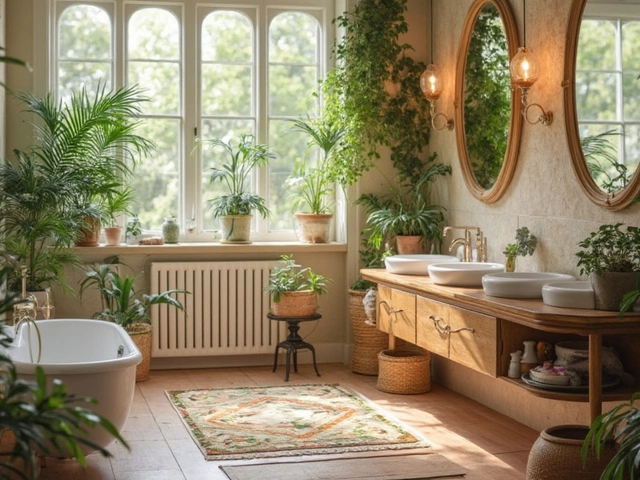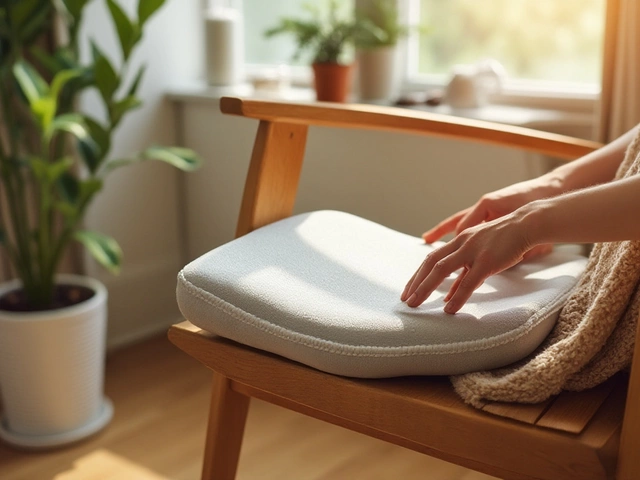Straight‑Sided Pan Name: Why It’s Called a Sauté Pan
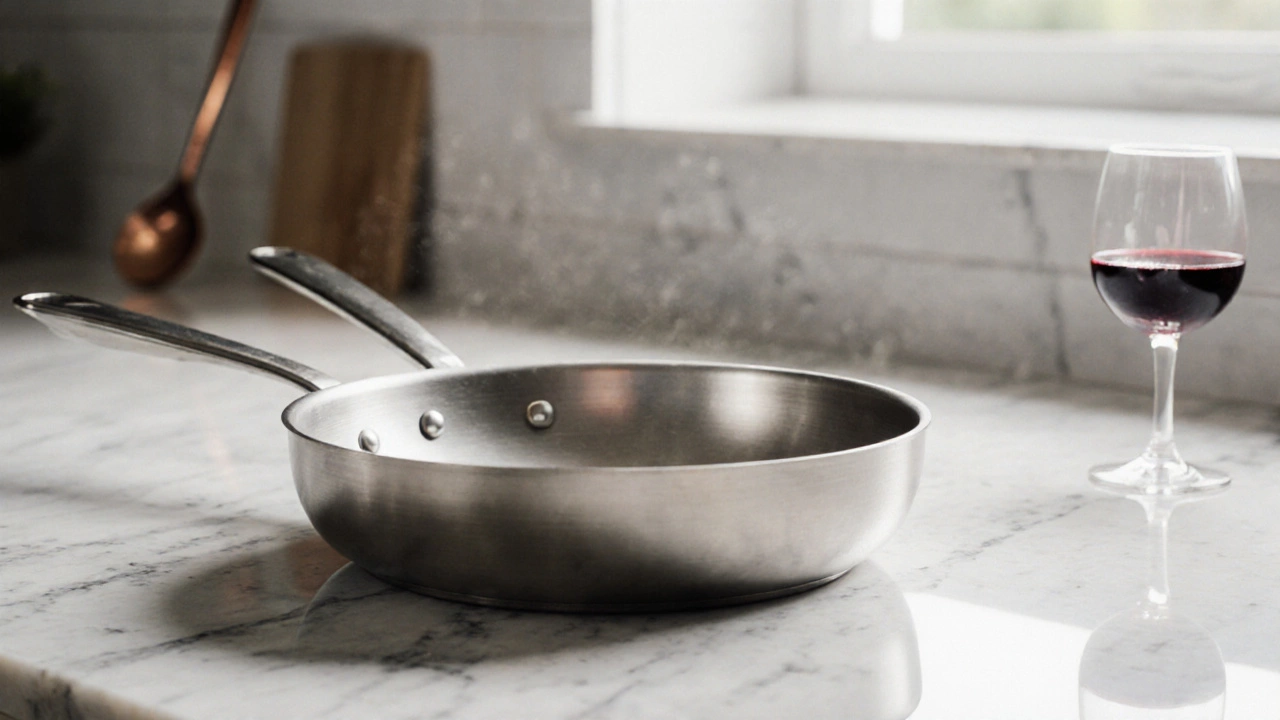
Cookware Selection Tool
Find Your Ideal Cookware
Based on your cooking tasks and preferences, we'll recommend the best pan type for your needs.
Key Takeaways
- A pan with straight sides is most commonly called a sauté pan.
- Sauté pans differ from frying pans and skillets by having higher, vertical walls.
- Material, handle style, and lid type affect how you use a sauté pan.
- When you need to keep liquids in or reduce sauces, reach for a sauté pan.
- Alternatives include sheet pans, Dutch ovens, and casserole dishes, each suited to specific tasks.
Ever pulled a pan out of a recipe and wondered why the author mentioned “straight‑sided” instead of just saying “pan”? The wording isn’t accidental - it points to a specific design that changes how heat, liquid, and food move inside the cookware. Below we break down what that design is called, why it matters, and how to pick the right one for your kitchen.
Sauté pan is a cooking vessel with straight, high walls and a flat bottom, typically equipped with a long handle and a smaller helper‑handle for easy maneuvering. It first appeared in French kitchens in the 1800s, and the name comes from the French verb “sauter,” meaning “to jump,” which describes the quick, high‑heat tossing method the pan was built for.
How a Sauté Pan Differs from Similar Cookware
Many home cooks lump all stovetop pans together, but the wall angle alone creates three distinct categories:
- Frying pan (or skillet): shallow, sloped sides (about 15‑30°) that let oil pool and food flip easily. Best for searing, quick‑cook items, and foods that need a lot of space to move around.
- Sauté pan: walls are usually 2‑3 inches tall and almost vertical (10‑15°). This shape keeps liquids from spilling while still allowing a good sear.
- Sheet pan: a flat, rectangular metal sheet with very low edges, designed for the oven rather than the stovetop.
Because the sides are straight, a sauté pan can hold more sauce, broth, or wine without bubbling over, making it the go‑to tool for deglazing, reducing, and braising on the stovetop.
When to Use a Straight‑Sided Pan
- Deglazing: After searing meat, pour a splash of stock or wine into the pan. The vertical walls keep the liquid from escaping while you scrape up the browned bits.
- Reducing sauces: You can simmer a sauce without it splattering across the stove.
- Pan‑roasting vegetables: Toss veggies in oil, let them caramelize, then finish with a quick steam in the same pan.
- One‑pan meals: Brown protein, add veggies, then pour broth and let everything simmer together.
If you try these tasks in a regular skillet, you’ll likely end up with a mess of liquid on the burners.
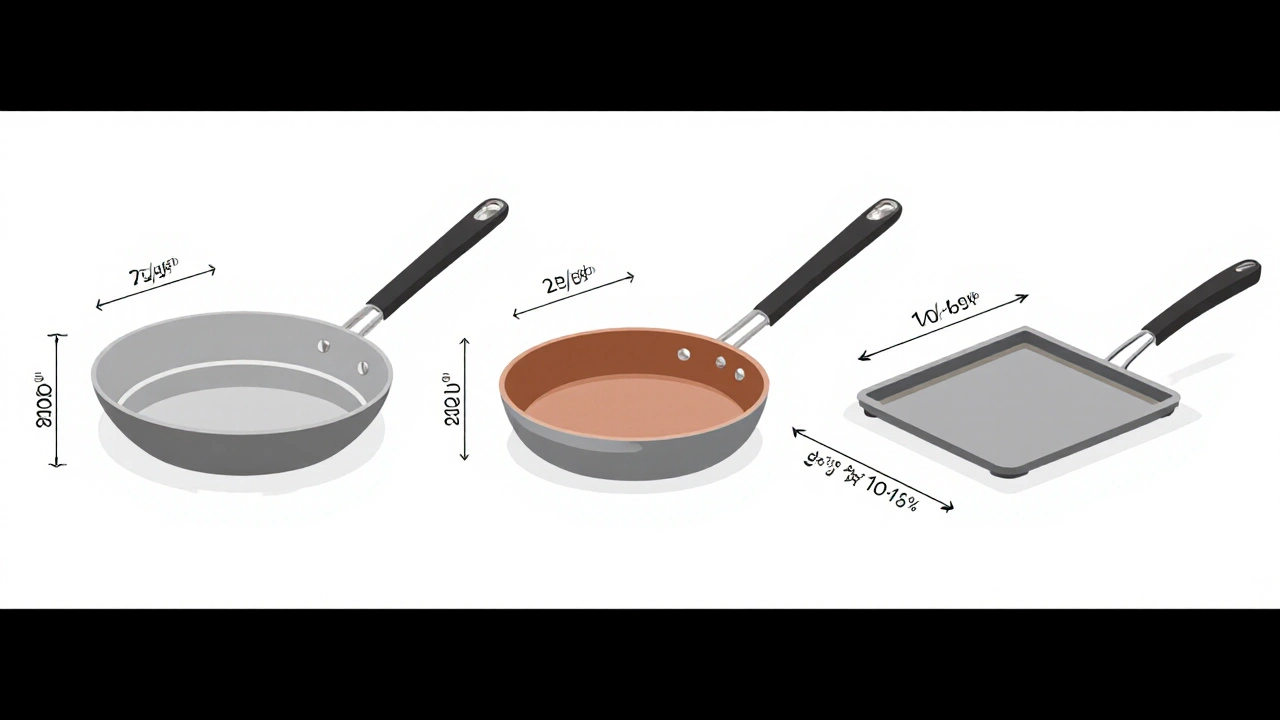
Choosing the Right Material
Material influences heat distribution, durability, and maintenance. Here’s a quick guide:
| Material | Heat Conductivity | Typical Uses | Care Tips |
|---|---|---|---|
| Stainless Steel | Medium | Acidic sauces, browning | Pre‑heat, use oil to prevent sticking |
| Aluminum (hard‑anodized) | High | Even browning, quick sautés | Avoid abrasive cleaners |
| Cast Iron (enameled) | Very High | Slow braises, deep‑flavored dishes | Do not shock with cold water |
| Copper (lined) | Excellent | Precision cooking, delicate sauces | Polish regularly to prevent tarnish |
For most home kitchens, a hard‑anodized aluminum sauté pan offers the best balance of price, performance, and ease of cleaning.
Handle Styles and Lids
Two handle designs dominate the market:
- Long, single handle: Ideal for tossing and quick moves, but you may need a helper‑handle on larger pans.
- Dual‑handle: Provides extra grip for heavy, sauce‑laden pans, especially when lifting from the oven.
A tight‑fitting lid (often glass‑covered) traps steam, allowing you to finish cooking without moving the pan. Some lids have a vent slot to release excess pressure, which is handy when reducing sauces.
Alternatives When You Don’t Have a Sauté Pan
If you’re in a pinch, these options can mimic a sauté pan’s performance:
- Dutch oven: Heavy‑walled, comes with a tight lid. Works great for braising, but it’s bulkier.
- Casserole dish (stovetop‑safe): Usually ceramic or enameled steel, with straight sides. Good for slow cooking.
- Wide stockpot: Tall sides keep liquids in, but the large volume can dilute flavors if not managed.
Remember, the main advantage of a sauté pan is its combination of a flat bottom for searing and vertical walls for liquid control.
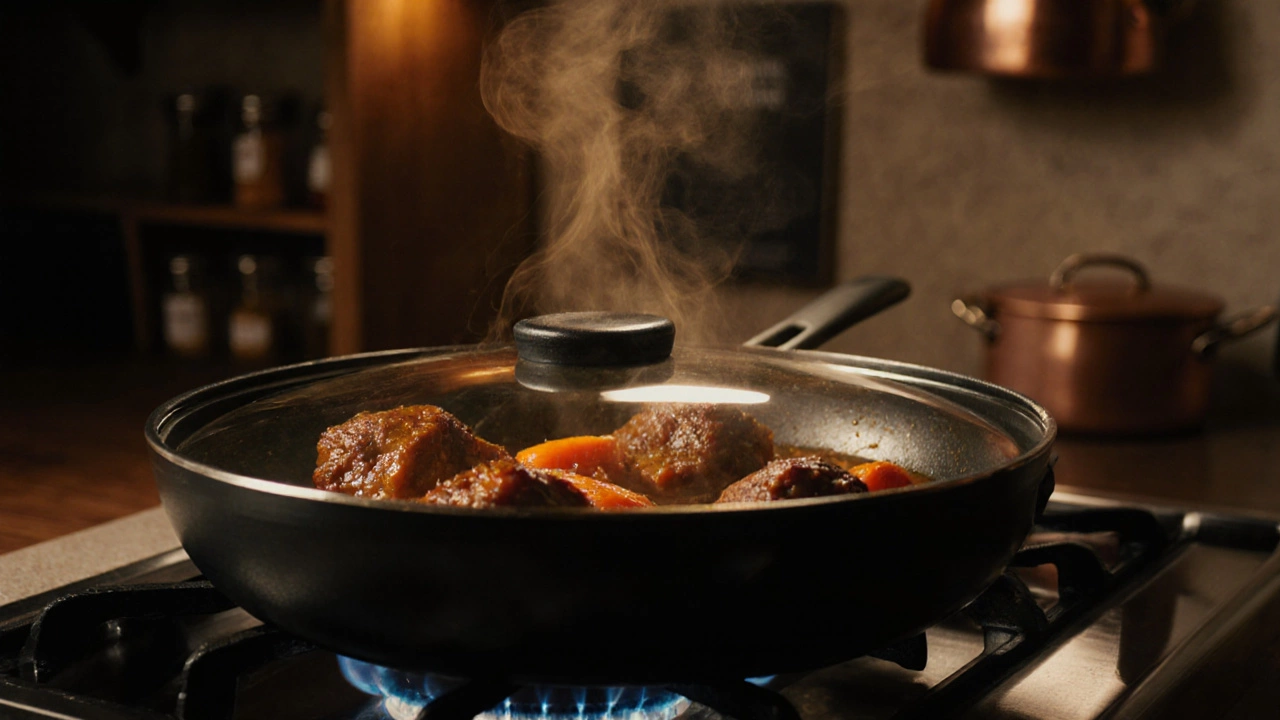
Common Mistakes and How to Avoid Them
- Overcrowding: Packing too much food lowers the pan’s temperature, resulting in steaming rather than searing. Cook in batches if needed.
- Cold food into a hot pan: This causes sticking. Let ingredients sit at room temperature for a few minutes.
- Using the wrong heat level: High heat is great for a quick sear, but medium‑low is better for reducing sauces without burning.
- Skipping the pre‑heat: A properly heated pan creates a natural non‑stick surface.
Quick Care Checklist for Your Sauté Pan
- Allow the pan to cool before washing.
- For non‑stick surfaces, use silicone or wooden tools.
- Season cast‑iron sauté pans regularly with a thin coat of oil.
- Store with a protective liner or hang to avoid scratching the interior.
Frequently Asked Questions
Is a sauté pan the same as a frying pan?
No. A frying pan (or skillet) has sloped sides that let oil pool and food flip easily, while a sauté pan has straight, higher sides that keep liquids contained.
Can I use a sauté pan on induction cooktops?
Yes, as long as the pan’s base is magnetic (most stainless‑steel and cast‑iron models work). Check the manufacturer’s specifications.
What size sauté pan should I buy?
A 10‑inch (25 cm) pan covers most home‑cooking needs. If you often cook for a crowd, step up to a 12‑inch (30 cm) model.
Is it okay to put a sauté pan in the oven?
Most sauté pans are oven‑safe up to 400‑450 °F (200‑230 °C). Verify the handle material; some plastic‑wrapped handles melt above 350 °F.
How do I clean a seasoned cast‑iron sauté pan?
Rinse with hot water, scrub with a stiff brush, then apply a thin layer of oil while the pan is still warm. Avoid soap unless you plan to re‑season.
Knowing the exact name of a straight‑sided pan helps you search for the right product, read recipes confidently, and avoid kitchen mishaps. Whether you’re a weekend chef or a seasoned home cook, adding a quality sauté pan to your arsenal unlocks a world of one‑pan meals, sauce‑perfecting techniques, and mess‑free cooking.

